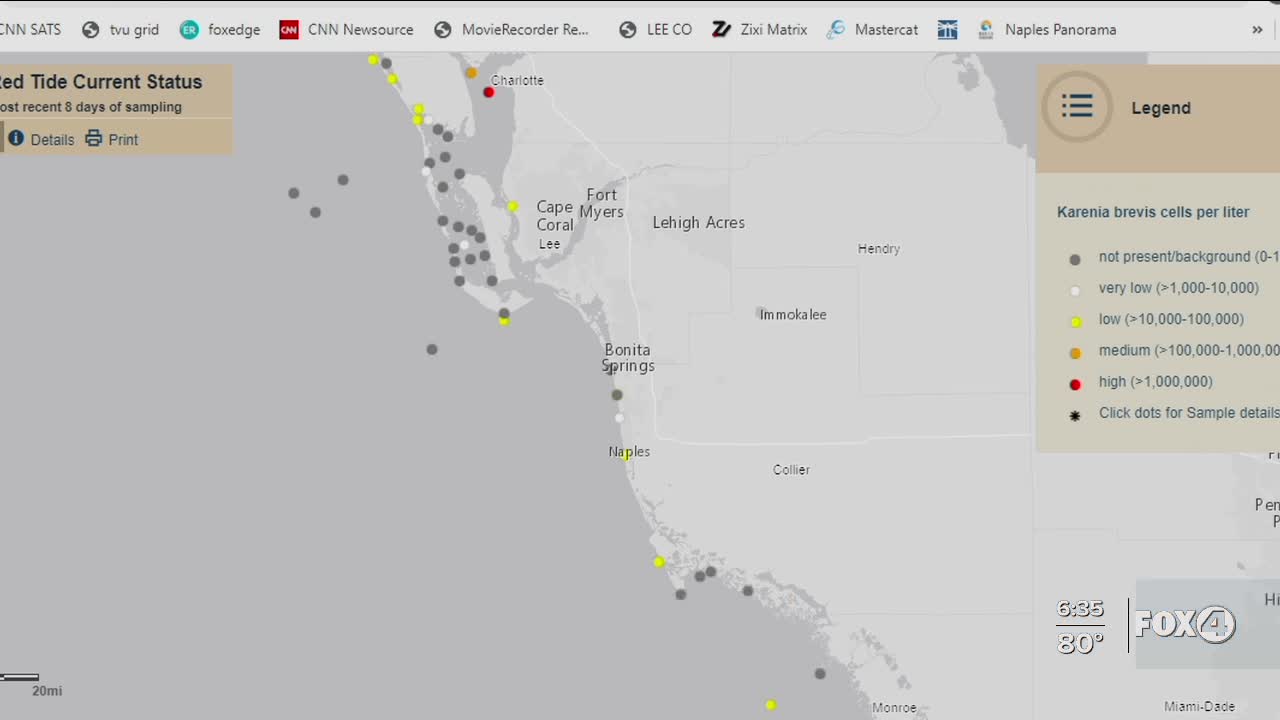

“I don’t have that crystal ball.”Ĭoncentrations are measured by using a microscope to count how many cells are visible in a liter of water. “I wouldn’t be able to say,” Bartleson said.

Sometimes, Bartleson says, the red tide organisms themselves get a virus or bacteria – “some kind of infection that seems to take care of all of them all of a sudden and no matter how large the bloom is, it just all goes away at once.” But so far this year, “we’re not seeing any sign of it going away,” he said, and he can’t predict when it will. He had to tell her it was “pretty bad down here (and) that there’s no sign of (red tide) disappearing.” “Every year, when the red tide starts making the news, they start calling from wherever they are, because they want to know if they can come for vacation.”

“Somebody from New Jersey called me yesterday,” Bartleson said. But for those potential visitors, such technicalities may be less important than whether or not the stuff is going to wreck their trip to the beach. Yet it's not a plant. Karenia belong to the Protista kingdom, which includes amoebas and slime molds – and for that reason, some say it shouldn't be lumped with algae either. It's a dinoflagellate, a single-celled organism that moves with a pair of thread-like whips called flagella and can make food from the sun by photosynthesizing as plants do. Scientists are studying what it might do to humans over time.Īlthough other life forms can produces what's commonly known as red tide, in Southwest Florida, Karenia brevis is the usual suspect. In the animal world, it can sicken or wipe out fish, birds and mammals like manatees and dolphins. Short-term, red tide toxins can produce effects ranging from back-of-the-throat tickling to coughs to blinding headaches. Few are as close to the daily details as Bartleson, who regularly samples the region's saltwater for harmful algal blooms like Karenia brevis and other water-fouling microorganisms.īartleson can't offer any guarantees, especially lately.įor more than a month, red tide has been lingering in patches along the Southwest Florida coastline from Marco Island to Captiva and beyond. In high enough concentrations, it can make a day – or a week – at the beach miserable. So they call the Sanibel-Captiva Conservation Foundation research scientist for the inside scoop. Would-be vacationers from up north on the verge of a week on the Gulf Coast start seeing headlines about red tide and panic – understandably. The Florida Department of Health advises people with severe or chronic respiratory conditions, such as emphysema or asthma, to avoid red tide areas.Rick Bartleson gets asked every year: Will red tide ruin my Southwest Florida stay? Offshore winds usually keep respiratory effects experienced by those on the shore to a minimum. brevis, is present and winds blow onshore. Some people experience respiratory irritation (coughing, sneezing, tearing and an itchy throat) when the Florida red tide organism, K. Will I experience respiratory irritation during a Florida red tide? The duration of a bloom in nearshore Florida waters depends on physical and biological conditions that influence its growth and persistence, including sunlight, nutrients and salinity, as well as the speed and direction of wind and water currents. Red tides can last as little as a few weeks or longer than a year. Fish kills near Tampa Bay were even mentioned in the records of Spanish explorers. No, red tides were documented in the southern Gulf of Mexico as far back as the 1700s and along Florida's Gulf coast in the 1840s. brevis blooms from red tides caused by other species of algae, researchers in Florida call the former the “Florida red tide.” Is red tide a new phenomenon? In Florida and the Gulf of Mexico, the species that causes most red tides is Karenia brevis, often abbreviated as K. A red tide, or harmful algal bloom, is a higher-than-normal concentration of a microscopic alga (plantlike organism).


 0 kommentar(er)
0 kommentar(er)
